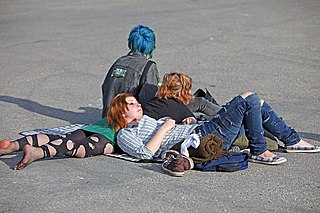
Folklore is shared by a particular group of people; it encompasses the traditions common to that culture, subculture or group. This includes tales, myths, legends, proverbs, poems, jokes and other oral traditions. They include material culture, ranging from traditional building styles common to the group. Folklore also includes customary lore, taking actions for folk beliefs, the forms and rituals of celebrations such as Christmas and weddings, folk dances and initiation rites. Each one of these, either singly or in combination, is considered a folklore artifact or traditional cultural expression. Just as essential as the form, folklore also encompasses the transmission of these artifacts from one region to another or from one generation to the next. Folklore is not something one can typically gain in a formal school curriculum or study in the fine arts. Instead, these traditions are passed along informally from one individual to another either through verbal instruction or demonstration. The academic study of folklore is called folklore studies or folkloristics, and it can be explored at undergraduate, graduate and Ph.D. levels.

Gossip is idle talk or rumour, especially about the personal or private affairs of others; the act is also known as dishing or tattling.

Mass media refers to a diverse array of media that reach a large audience via mass communication.

A subculture is a group of people within a cultural society that differentiates itself from the conservative and standard values to which it belongs, often maintaining some of its founding principles. Subcultures develop their own norms and values regarding cultural, political, and sexual matters. Subcultures are part of society while keeping their specific characteristics intact. Examples of subcultures include BDSM, hippies, hipsters, goths, steampunks, bikers, punks, skinheads, hip-hoppers, metalheads, furry fans and cosplayers. The concept of subcultures was developed in sociology and cultural studies. Subcultures differ from countercultures.
Gospel music is a traditional genre of Christian music, and a cornerstone of Christian media. The creation, performance, significance, and even the definition of gospel music varies according to culture and social context. Gospel music is composed and performed for many purposes, including aesthetic pleasure, religious or ceremonial purposes, and as an entertainment product for the marketplace. Gospel music is characterized by dominant vocals and strong use of harmony with Christian lyrics. Gospel music can be traced to the early 17th century.

A rumor, or rumour, is "a tall tale of explanations of events circulating from person to person and pertaining to an object, event, or issue in public concern."
Chinese whispers or telephone is an internationally popular children's game. It is also called transmission chain experiments in the context of cultural evolution research, and is primarily used to identify the type of information that is more easily passed on from one person to another.

Gauteng is one of the nine provinces of South Africa. The name in Sotho-Tswana languages means 'place of gold'.

Cultural identity is a part of a person's identity, or their self-conception and self-perception, and is related to nationality, ethnicity, religion, social class, generation, locality or any kind of social group that has its own distinct culture. In this way, cultural identity is both characteristic of the individual but also of the culturally identical group of members sharing the same cultural identity or upbringing. Cultural identity is a fluid process that is changed by different social, cultural, and historical experiences. Some people undergo more cultural identity changes as opposed to others, those who change less often have a clear cultural identity. This means that they have a dynamic yet stable integration of their culture.

George Francis Rayner Ellis, FRS, Hon. FRSSAf, is the emeritus distinguished professor of complex systems in the Department of Mathematics and Applied Mathematics at the University of Cape Town in South Africa. He co-authored The Large Scale Structure of Space-Time with University of Cambridge physicist Stephen Hawking, published in 1973, and is considered one of the world's leading theorists in cosmology. From 1989 to 1992 he served as president of the International Society on General Relativity and Gravitation. He is a past president of the International Society for Science and Religion. He is an A-rated researcher with the NRF.
Spirit of place refers to the unique, distinctive and cherished aspects of a place; often those celebrated by artists and writers, but also those cherished in folk tales, festivals and celebrations. It is thus as much in the invisible weave of culture as it is the tangible physical aspects of a place or its interpersonal aspects.

The traditional beliefs and practices of African people are highly diverse beliefs that include various ethnic religions. Generally, these traditions are oral rather than scriptural and are passed down from one generation to another through folk tales, songs, and festivals, and include beliefs in spirits and higher and lower gods, sometimes including a supreme being, as well as the veneration of the dead, and use of magic and traditional African medicine. Most religions can be described as animistic with various polytheistic and pantheistic aspects. The role of humanity is generally seen as one of harmonizing nature with the supernatural.
Andrew Salkey was a Jamaican novelist, poet, children's books writer and journalist of Jamaican and Panamanian origin. He was born in Panama but raised in Jamaica, moving to Britain in the 1952 to pursue a job in the literary world, combining a job in a South London Comprehensive school teaching English with a job working on the door of a West End night club. The 1960s and 1970s saw Salkey working as a broadcaster for the BBC World Service, Caribbean section. A prolific writer and editor, he was the author of more than 30 books in the course of his career, including novels for adults and for children, poetry collections, anthologies, travelogues and essays. In the 1960s he was a co-founder with John La Rose and Kamau Brathwaite of the Caribbean Artists Movement (CAM). Salkey died in Amherst, Massachusetts, where he had been teaching since the 1970s, holding a lifetime position as Writer-In-Residence at Hampshire College.
Traditional stories, or stories about traditions, differ from both fiction and nonfiction in that the importance of transmitting the story's worldview is generally understood to transcend an immediate need to establish its categorization as imaginary or factual. In the academic circles of literature, religion, history, and anthropology, categories of traditional story are important terminology to identify and interpret stories more precisely. Some stories belong in multiple categories and some stories do not fit into any category.

Pavement dwellers refers to informal housing built on the footpaths/pavements of city streets. The structures use the walls or fences which separate properties from the pavement and street outside. Materials include cloth, corrugated iron, cardboard, wood, plastic, and sometimes also bricks or cement.

Culture is an umbrella term which encompasses the social behavior, institutions, and norms found in human societies, as well as the knowledge, beliefs, arts, laws, customs, capabilities, and habits of the individuals in these groups. Culture is often originated from or attributed to a specific region or location.

News is information about current events. This may be provided through many different media: word of mouth, printing, postal systems, broadcasting, electronic communication, or through the testimony of observers and witnesses to events. News is sometimes called "hard news" to differentiate it from soft media.

English coffeehouses in the 17th and 18th centuries were public social places where men would meet for conversation and commerce. For the price of a penny, customers purchased a cup of coffee and admission. Travellers introduced coffee as a beverage to England during the mid-17th century; previously it had been consumed mainly for its supposed medicinal properties. Coffeehouses also served tea and hot chocolate as well as a light meal.
Myth is a folklore genre consisting of narratives that play a fundamental role in a society, such as foundational tales or origin myths. Since "myth" is popularly used to describe stories that are not objectively true, the identification of a narrative as a myth can be highly controversial. Many religious adherents believe that the narratives told in their respective religious traditions are historical without question, and so object to their identification as myths while labelling traditional narratives from other religions as such. Hence, some scholars may label all religious narratives as "myths" for practical reasons, such as to avoid depreciating any one tradition because cultures interpret each other differently relative to one another. Other scholars may abstain from using the term "myth" altogether for purposes of avoiding placing pejorative overtones on sacred narratives.

A music community is a group of people involved in a given type of music. Typically such a community has an informal, supportive structure. In the past such groups have typically developed within a town or school, where the members can meet physically. The internet has made it possible for a more dispersed music community to use the web for communication, either via specialized websites or through broader social media. Ethnographic studies indicate that online music communities do not center around one website, but use a network of sites, including personal blogs, artist or publisher sites and social media.













